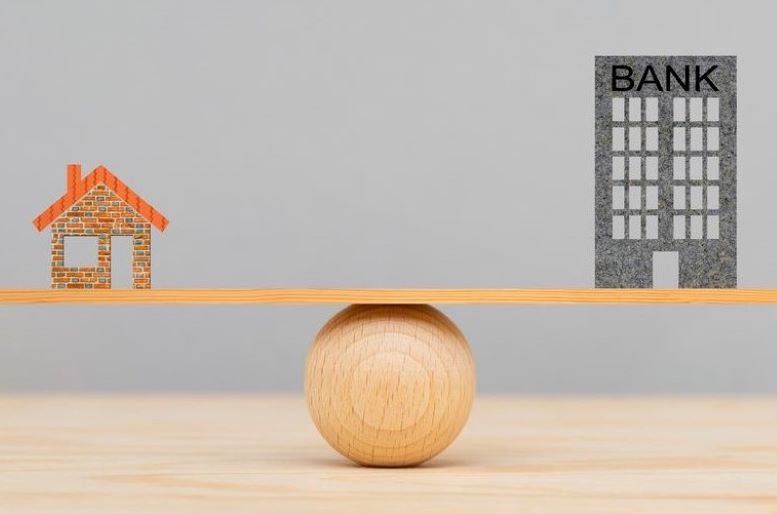Don’t Hold Your Breath on that Flood of Foreclosures
Don’t Hold Your Breath on that Flood of Foreclosures


In recent articles, we had touched on those ideas that distinguish our current real estate market from what happened in 2008 when our economy collapsed. While it is our responsibility as realtors to monitor all aspects of the current market, I also think I want to reassure myself that any market similarities are tied to limited inventory and low interest rates rather than Wall Street. Yes, interest rates are low and driving buyer competition, but lending standards are not what they were in the early 2000s.
Investopedia, the world’s leading source of financial content on the web, reports that risky loans that were so prevalent in the early 2000s are scarce today because lending practices have drastically improved. While there are still loan programs out there that will allow a 620-credit score, Fannie Mae reports that all loans that originated in February of this year had an average FICO score of 753.
Some predict that once mortgage forbearance ends, millions of foreclosures will flood the market. Here are some differences from 2008 that indicate that won’t happen.

- Almost 50% Leave Forbearance Already Caught Up on Payments.
According to the Mortgage Bankers Association (MBA), data through March 28 says 48.9% of homeowners who left forbearance were current on their mortgages when they exited.
- 6% made their monthly payments during forbearance.
- 7% brought their past due payments current.
- 6% paid off their loans in full.
- It Looks Like Banks Don’t Want the Houses Back
Indicators would suggest this. For example, about 50% of mortgages are backed by the Federal Housing Finance Agency (FHFA). In 2008, the FHFA offered 208,000 homeowners some form of Home Retention Action, allowing them to work out some option to keep their homes. By comparison, the FHFA has offered that same protection to over 1,000,000 homeowners in the past year.
Today, almost all lenders are working with their borrowers. According to the MBA, of those who have already left forbearance,
- 5% have worked out a repayment plan with their lender.
- 5% were granted a loan deferral where the borrower does not have to pay interest or principle on the loan for an agreed-to period of time.
- 9% were given a loan modification.
- There is No Political Will to Foreclose on these Homes.
The government seems determined not to let individuals or families to lose their homes. Bloomberg recently reported:
“Mortgage companies could face penalties if they don’t take steps to prevent a deluge of foreclosures that threatens to hit the housing market later this year, a U.S, Regulator said. The Consumer Financial Protection Bureau (CFPB) is tied to the forbearance relief that has allowed millions of borrowers to delay their mortgage payments due to the pandemic…mortgage servicers should start reaching out to their affected homeowners now to advise them on ways they can modify their loans.”
The CFPB is proposing a new set of guidelines to ensure people will be able to retain their homes. The major points in the proposal would:
- Provide a special pre-foreclosure review period that would generally prohibit servicers from starting foreclosure until after December 31, 2021.
- Permit servicers to offer certain streamlined loan modification options to borrowers with COVID-19 related hardships based on the evaluation of an incomplete application.
- Want temporary changes to certain required servicer communications to ensure borrowers receive key information about their options at the appropriate time.
A final decision has yet to be made and some question whether the CFPB has the power to delay foreclosures, but their entire report can be found here.
- Homeowners Will Sell Their Homes before Foreclosure.
According to the latest CoreLogic Home Equity Report, the average equity of mortgaged homes is currently $204,000. Another 38% do not have a mortgage, so the level of equity available to today’s homeowners is significant. And just like the banks, the report suggests homeowners have learned their lesson from the financial crash in 2008 as well.
“In the same way grandparents and great-grandparents were shaped by the great depression, the public today remembers the 2006 mortgage meltdown and the foreclosures, unemployment, and bank failures it created. No one with any sense would want to repeat that experience…and may explain why so much real estate equity remains mortgage-free.”
Reports of massive foreclosures about to hit the market appear to be greatly exaggerated or are simply not accounting for the whole picture. As Ivy Zelman, CEO of Zelman & Associates with roughly 30 years of experience covering housing and housing-related industries, recently proclaimed:
The likelihood of us having a foreclosure crisis again is about zero percent.”



